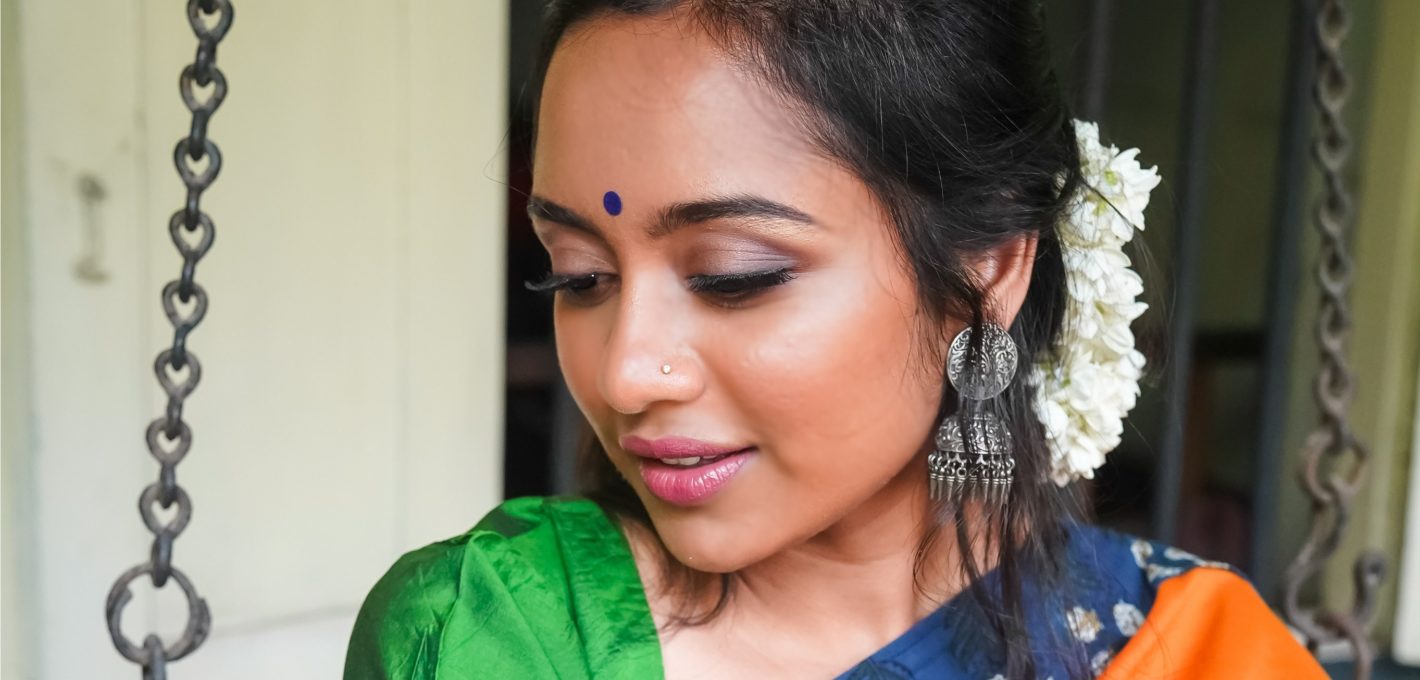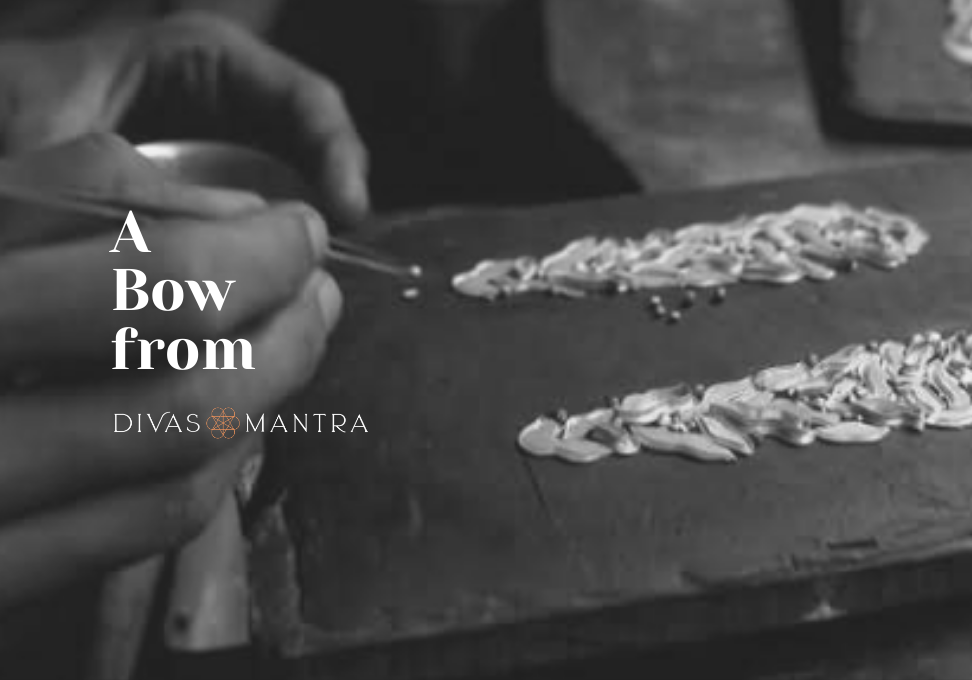
Temple Jewelry ~ Nitya Narasimhan
History of Dance
Dancers and Temples have a long close-knit history. In southern India, dance was practiced and shared through a community of dancers/women who were known as devadasis. Dance was one with the temples of India during the golden era of Devadasis. In the temples, the devadasis were the primary conduits for the pujas (ritual offerings) performed in front of the sanctums for the audience of the Divine. Contrary to evangelical propaganda, these women were highly accomplished and respected class of people, hierarchically on par with the temple Archaka. The devadasi was revered as a living symbol of the goddess’s shakti, or life-giving power. When the devadasi danced, she became the embodiment of the divine, transforming the space being danced in as well as the audience.
The devadasi tradition known as “Sadir Attam” began around the third century, continued into the twentieth century, when it was outlawed by the ruling British and Indian elite and aristocrats. The western eye and outlook did not understand a matriarchy or the respect, position that was given to women in society. To their eyes, the dance of the devadasi was too intertwined and filled with sensuality. The dancers were considered as prostitutes and society was to be purified by banning them.
The anti Nauch and anti-dedication movement began in 1882. The portrayal of the Devadasi system as “prostitution” was done to advertise the supposed grotesqueness of Indian culture for political means, even though the British colonial authorities officially maintained most brothels in India. The Devadasi system was formally outlawed in all of India in 1988. In the late 1920s and the early 1930s, attempts were made to abolish the devadasi system entirely and Indian dance could have died at this point. This was a dark period in the cultural history of India and it was with great efforts by many notable people like Rukmini Devi Arundale and E Krishna Iyer that the classical Indian dance was revived, moved out of the temples and transformed from a purely temple-based devotional tradition into the national art form that we know it to be. In the 1932 meeting of the Madras Music Academy the art form was renamed as “Bharatanatyam”. The stigma associated with Bharatanatyam, however, did not disappear altogether until the passing of the Devadasi Dedication Abolition Act in 1947. The law was passed in the Madras Presidency and gave devadasi the legal right to marry and made it illegal to dedicate girls to temples.
Today, dancers are no longer confined to the temples, but dance and music remain an essential parts of temple worship. Temples and temple jewelry are both a sacred part of a dancer’s journey and life.
History of Temple Jewelry
The art of making temple jewelry originated around Nagarcoil in Tamil Nadu and was initiated by the Chola kings to adorn the deities of their South Indian temples. Pure Gold and Silver along with precious stones like ruby, emerald, diamonds were used to craft ornaments for the idols. These ornaments were inspired by the rich architecture of the temples. The motifs of the temple like its pillars, arches, gopurams, even the gods and goddesses were replicated into jewellery hence the name temple jewelry. These jewels also came in other designs like, lotus, peacock, snakes, etc. Temple priests stand the deity in front of a mirror to show them their image decked in jewels before going out for a procession. Such temple jewellery is typically inlaid with diamonds and many other kinds of precious gems, not only in gold but also silver ornaments.
As the years progressed, royalty (kings/queens) started commissioning artisans to make this type of jewels for their personal usage. These royal patrons further gifted the jewelry to the Devadasis who used to dance in the courts of the kings. The devadasis or temple dancers popularized the jewelry and made is less exclusive. They called it Arakku (red wax) jewelry. Those days the Arakku was made of gold with ruby, emerald & pearls. The Arakku is admired for its beauty, wonderful artistry and unmatched craftsmanship. Around the 12th century, to make this jewelry more affordable a new technique called “Kemp Jewelry” came into being. Kempai means red in Kannada and Telugu. Glass was colored naturally, cut and set with molten arakku into the base design of Kemp Jewelry. Traditionally gold was used to make Kemp jewelry. Later, the base became silver coated with molten gold leaves. This same kind of setting is also seen in Tanjore paintings.
Temple Jewelry in dance today
With the passage of time, along with the spread of dance, temple jewellery became an accessible style and soon made its way into the world of trousseau and heirloom pieces. They became popular as adorning ornaments for South Indian weddings and other special occasions. Temple jewelry today is worn by Bharatanatyam as well as Kuchipudi dancers. Today, Arakku is made using a variety of metals like silver and brass as base material. We also see a wide range of designs and stones used. A typical bharatanatyam dancer would wear the following jewels for a performance :
Nethi Chutti , Chandran Sooryan , Rakodi for the head, Jhimki and Maatal for the ears, Long Haram and a short necklace around the neck, Odyanam for the waist and Bangles and Nose pins
These days dancers, including myself typically don’t wear all the above mentioned pieces. Minimalism has changed aesthetic choices. We also see a lot of artificial jewelry worn for performances. I have seen a wide variety of colors (blue, black, white stones, a variety of beads) replacing the original ones. New designs and innovative combinations have given us many more choices in what can be worn for a performance. I personally prefer the classic pearls with red and green stones. Specially ones that have been worn down years with a natural antique finish.
As a child who grew up in a very middle class family, my parents were not in a position to buy me authentic gold temple jewelry. In fact, I remember borrowing or wearing fake imitations for a long time until my arangetram (first solo stage performance) when my mother used all her savings to buy me silver temple jewelry. It was a big deal and I am very touched to recollect the memory of it even now. Even though my collection of temple jewelry has grown and those pieces were purchased for a 13 year old little girl, I still continue to wear and use most of them even today. Thats the beauty of silver/gold jewelry. With proper care, it can last forever. We often hear of temple jewelry that is passed down through the generations. These kind of stories of owning something that your grandmother probably got married in or danced with make these pieces of art so much more special.
Although originally made in gold, dancers today typically don’t wear gold based temple jewelry. Almost all of us exclusively use only silver temple jewelry. The primary reason for this is of course, affordability. The silver ornaments coated with molten gold leaves give almost the same finish look and feel of a gold ornament. There is also another practical aspect to preferring silver over gold. The jewelry we wear often goes through a lot of wear and tear, sweat, travel, and hanging around in questionable sabha dressing rooms and greenrooms. There have been many cases of misplaced, stolen and lost jewelry and I cant imagine carrying around or losing something that is made of gold. With the hustle and bustle of a performance, the last thing a dancer wants to be worrying about is whether or not their jewelry is safe.
As a practitioner of Bharatanatyam, temple jewelry plays a sacred role in my life. These pieces of jewelry invokes a sense of divine presence every time you wear and perform in them. The jewelry goes beyond just embellishment and looking pretty. It not only adds to the beauty of the dance but also to brings out the emotions associated with the history of the art form. When we wear the jewelry, we are transported to the era of the dancing hereditary dancers, the devadasis to whom we owe the art we practice. We are taken back to the temples, the history, the divinity and the spirituality associated with dance in India.
ABOUT THE AUTHOR
Nitya Narasimhan is a Bharatanatyam dancer and Artistic Director of the Prayukti Academy for Indian Arts, California.
She is a student of Guru Rukmini Vijayakumar, Bangalore and is a senior dancer in the Raadha Kalpa Dance Company. She began her Bharatanatyam training at the age of 4 and spent her formative years learning under Guru Suma Mani, Chennai. Nitya holds a diploma in movement and pedagogy from Attakkalari Centre for Movement Arts and Media and is currently pursuing an Art of Teaching program in Iyengar Yoga. She worked as the Programming Director for the Lshva Art Space and the Raadha Kalpa Dance Company gaining experience in working with eminent artists and curating various art events and festivals.
Nitya is currently a freelance performer in the Bay Area, California. She creates ensemble work through the Prayukti Creative and also works with many reputed Bay Area dance companies. She frequently tours across the US teaching workshops, presenting ensemble productions as well as solo works. You can find more about her here – https://www.instagram.com/nittuwit/ and https://nityanarasimhan.com/











